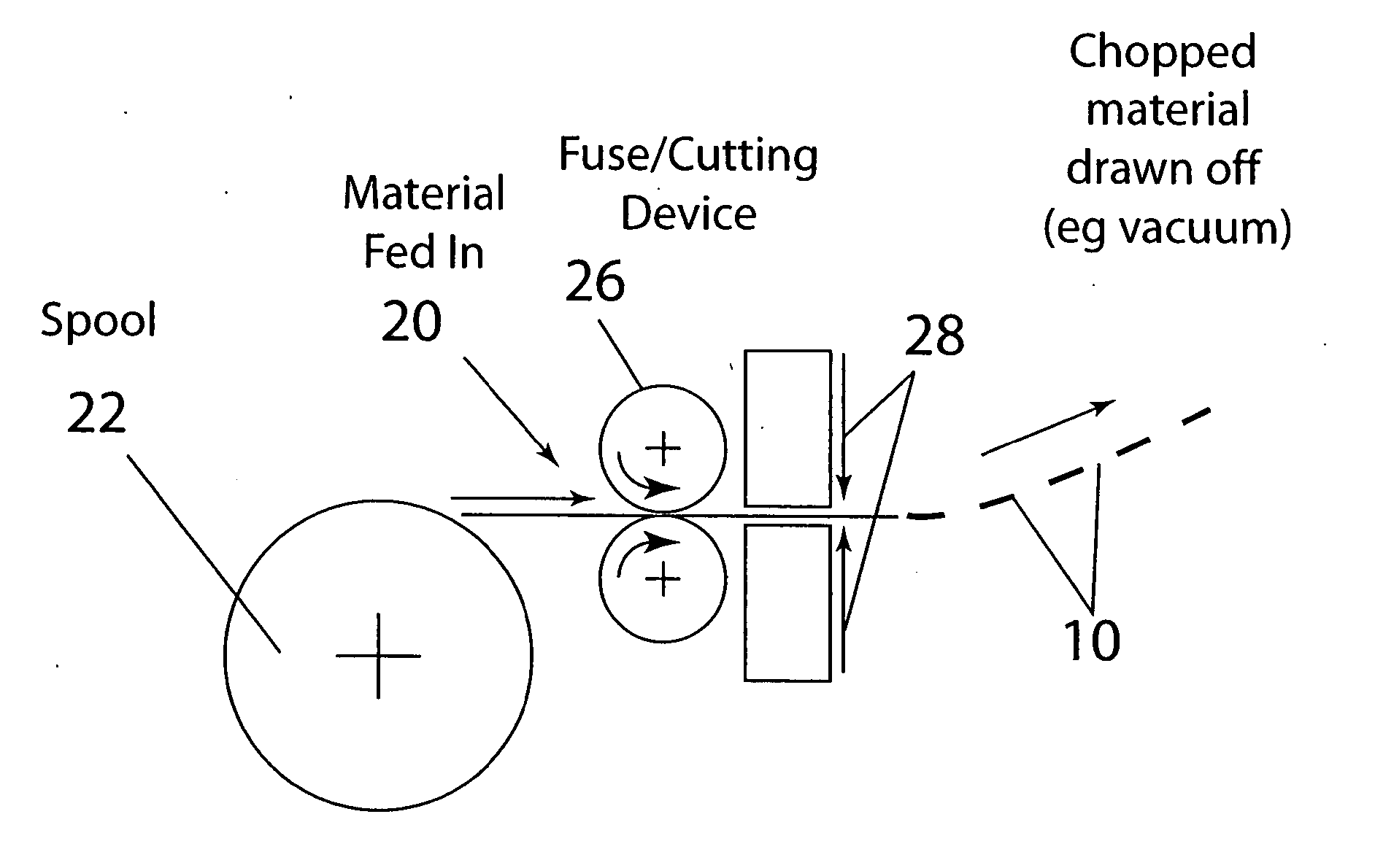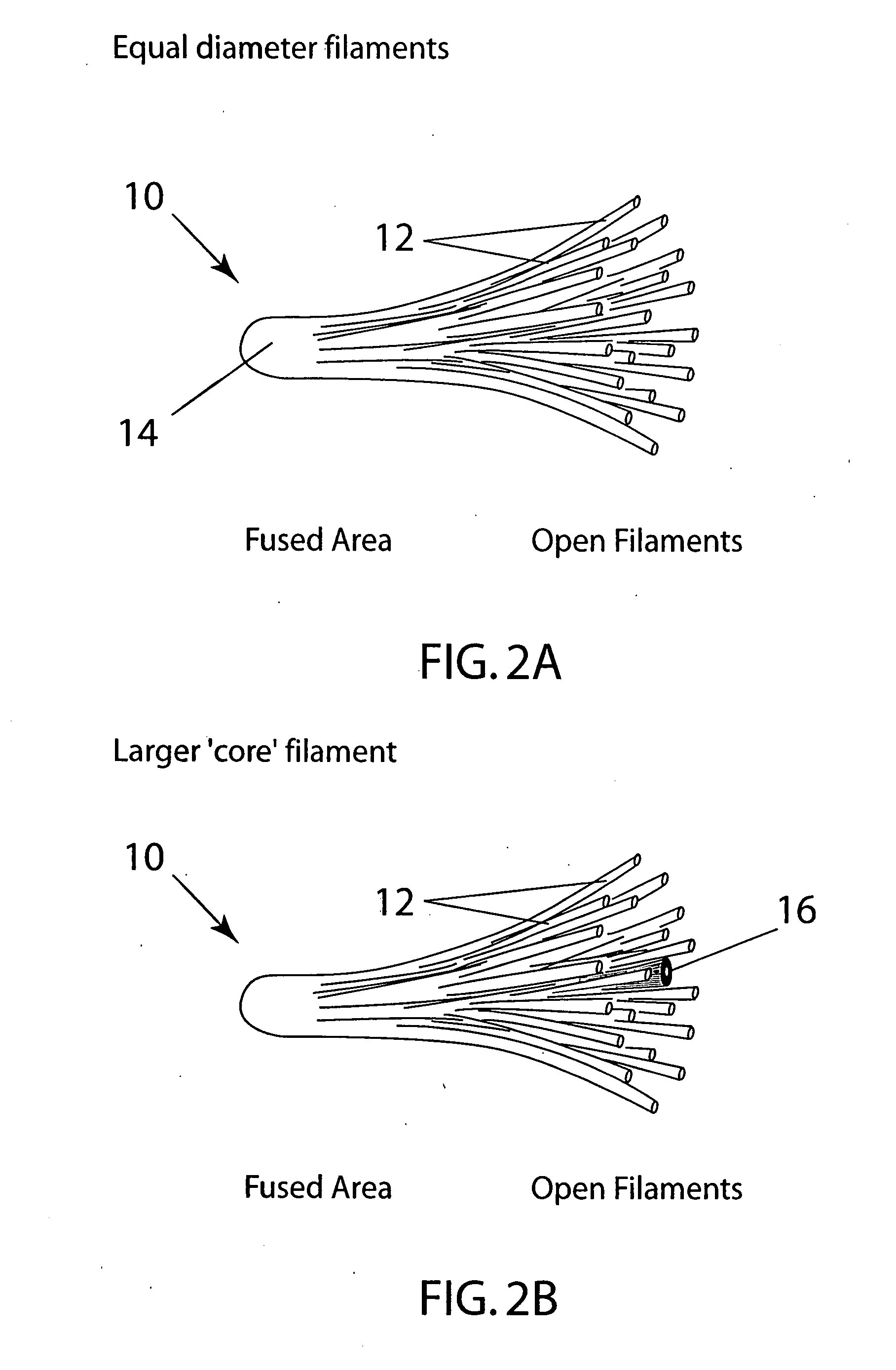Synthetic blown insulation
a technology of synthetic blown insulation and insulation layer, which is applied in the direction of ornamental textile articles, manufacturing tools, transportation and packaging, etc., can solve the problems of exceeding the thermal insulation properties, difficult to blow through conventional equipment, and too heavy and dense to be considered downlike, so as to reduce the poke-through of covering fabrics, reduce the cost, and wide flexibility
- Summary
- Abstract
- Description
- Claims
- Application Information
AI Technical Summary
Benefits of technology
Problems solved by technology
Method used
Image
Examples
Embodiment Construction
[0036] Turning now more particularly to the drawings, FIG. 2A shows generally the insulation material of the present invention which is in a blowable form. The insulation structure 10 comprises a number of individual filaments 12 joined or fused at one end 14 and open at the opposite end. That is, the insulation structure 10 comprises a fir-tree like or dendritic structure, similar to the structure of the natural down fiber shown in FIG. 1.
[0037] In this connection, the insulation structure 10 may have all filaments 12 of equal diameter as shown in FIG. 2A, or alternatively, a larger diameter core filament 16 surrounded by a plurality of open filaments 12 of smaller diameter as shown in FIG. 2B. In addition, the number and length of the filaments 12, 16 may be varied. Also, the insulation structure 10 may have straight filaments as shown in FIGS. 2A and 2B, or alternatively, crimped filaments (not shown).
[0038] The insulation structure 10 may comprise a wide range of thermoplastic...
PUM
| Property | Measurement | Unit |
|---|---|---|
| diameter | aaaaa | aaaaa |
| density | aaaaa | aaaaa |
| diameter | aaaaa | aaaaa |
Abstract
Description
Claims
Application Information
 Login to View More
Login to View More - R&D
- Intellectual Property
- Life Sciences
- Materials
- Tech Scout
- Unparalleled Data Quality
- Higher Quality Content
- 60% Fewer Hallucinations
Browse by: Latest US Patents, China's latest patents, Technical Efficacy Thesaurus, Application Domain, Technology Topic, Popular Technical Reports.
© 2025 PatSnap. All rights reserved.Legal|Privacy policy|Modern Slavery Act Transparency Statement|Sitemap|About US| Contact US: help@patsnap.com



